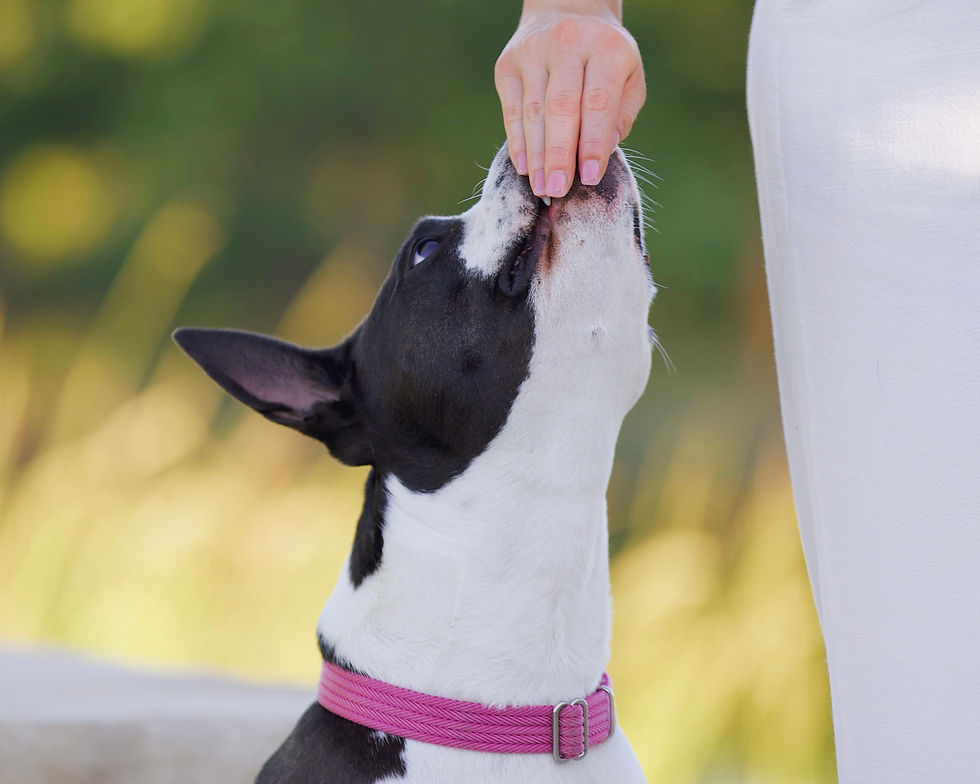AN EXPLANATION OF OPERANT CONDITIONING AND HOW YOU CAN PUT IT TO USE
- Gabby Reed

- Jan 31, 2024
- 1 min read
Updated: Aug 5, 2024
Written By: Gabby Reed, (Founder & Head trainer of WBCS).
In the world of dog training, understanding the principles of operant conditioning is crucial. This learning process revolves around modifying behaviors through the strategic use of reinforcement or punishment. Let's delve into the basics.
Operant conditioning involves four key components: positive reinforcement (+R), negative reinforcement (-R), positive punishment (+P), and negative punishment (-P). Each plays a unique role in shaping a dog's behavior.
Positive Reinforcement (+R): This involves doing or giving something to the dog to increase the likelihood of a particular behavior happening again. It's the classic "reward" scenario, where a desired action results in a positive outcome, reinforcing the dog's inclination to repeat the behavior.
Negative Reinforcement (-R): Here, the trainer withholds an aversive stimulus to increase the likelihood of a specific behavior. By removing something unpleasant or uncomfortable when the dog performs the desired action, negative reinforcement reinforces the notion that engaging in that behavior leads to a more favorable situation.
Positive Punishment (+P): In contrast, positive punishment entails giving an aversive stimulus to decrease the likelihood of a behavior recurring. This could involve introducing something unpleasant when the dog engages in an undesired behavior, creating an association that discourages the repetition of that action.
Negative Punishment (-P): Negative punishment involves withholding something the dog desires to decrease the likelihood of a behavior happening again. This could be denying attention, treats, or access to a preferred space when the dog exhibits an undesirable behavior. The absence of a desired outcome serves as a deterrent, encouraging the dog to avoid the unwanted behavior.




Pretty cool stuff !